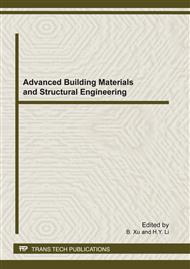p.3
p.7
p.13
p.17
p.21
p.26
p.30
p.35
Effect of Ammonium and Nitrate Ratio on Nutritional Quality of Chinese Kale
Abstract:
Effect of ammonium and nitrate ratio (0:100, 25:75, 50:50 and 75:25) on nutritional quality of Chinese kale (Brassica alboglabra Bailey) with 3 cultivars were studied in hydroponics. The results indicated that, the Vitamin C content in product organ (leaf and stalk) of Chinese kale was decreased by the enhancement of ammonium in nutrient solution, and the decrease was not significant for 25% enhancement of ammonium. 25% ammonium enhancement increased the soluble sugar content in product organ significantly, compared with other treatments. Free amino acids and protein content of Chinese kale increased gradually with the increasing of ammonium proportion in nutrient solution. Integrated nutritional quality of Chinese kale in 25% ammonium enhancement treatment was better than others under hydroponics condition.
Info:
Periodical:
Pages:
13-16
Citation:
Online since:
February 2012
Authors:
Keywords:
Price:
Сopyright:
© 2012 Trans Tech Publications Ltd. All Rights Reserved
Share:
Citation:


